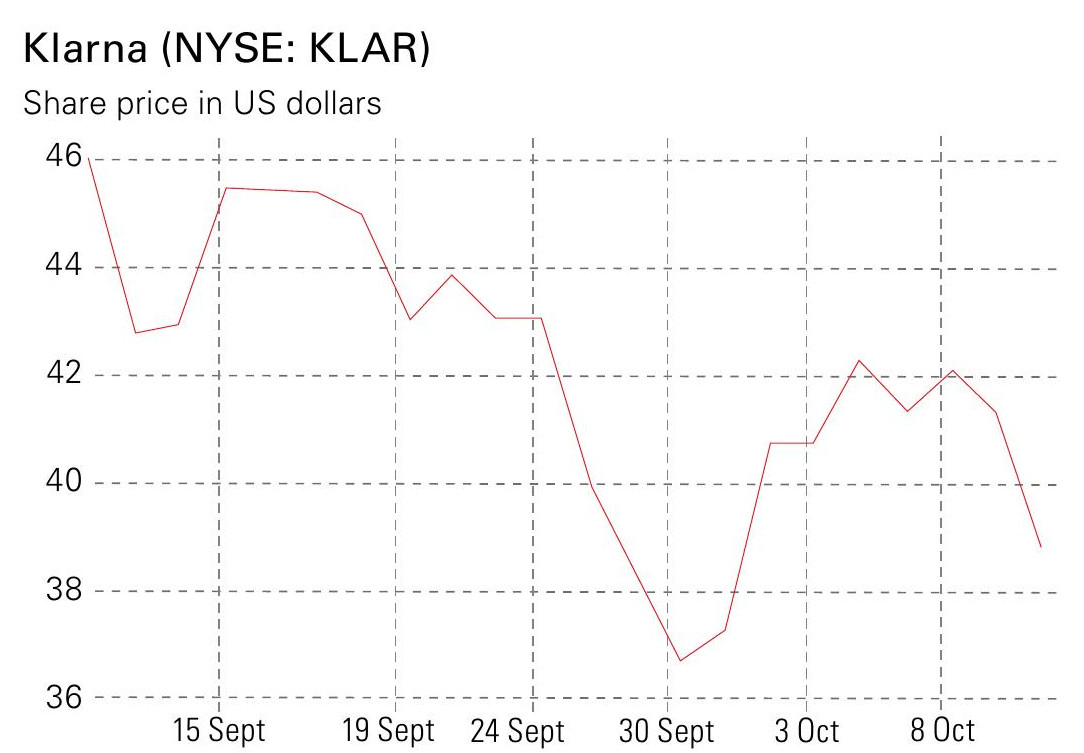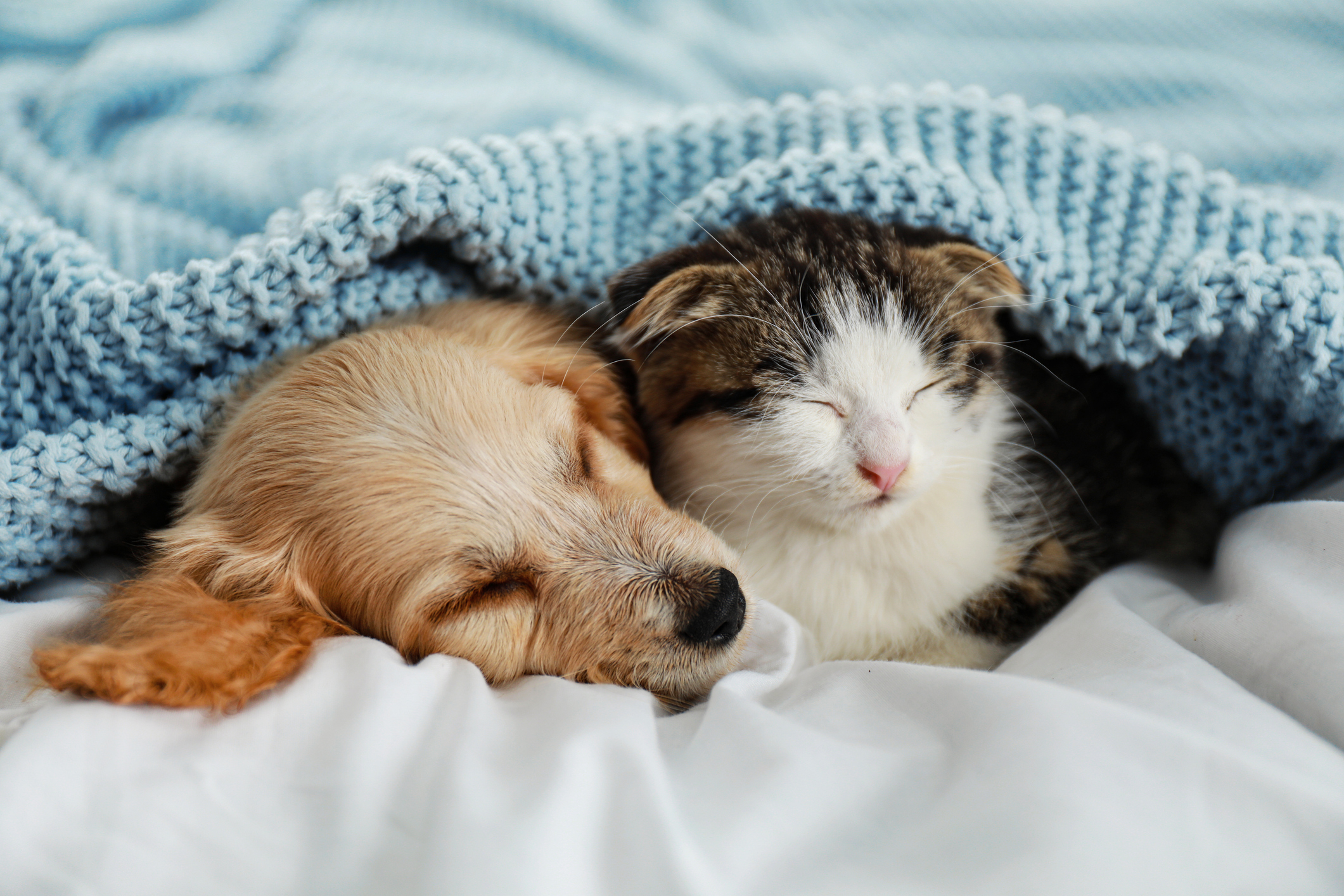Klarna leads a financial revolution – should investors buy?
Klarna has ambitions to rewire the global payments system and has huge growth potential


There’s something interesting happening in the world of fintech that has never been seen before in finance. The likes of Venmo, Klarna (NYSE: KLAR)and Revolut have become so integral to consumers’ day-to-day habits in their largest markets that their names are being used as verbs. In the US, it’s common to “Venmo” shared meals between friends, while in Ireland, where 73% of people have a Revolut account, “I’ll Revolut you” is now what people say if they’re sending money. To “Klarna it” has become slang for buying something you can’t afford.
It’s not great marketing that’s helped these firms capture users’ attention, but ease of use. Revolut has grabbed market share from Ireland’s big banks as their apps are clunky, fees are high, and payments can take days to process. Their response to the threat posed by fintech is telling. Ireland’s incumbent banks are combining to roll out a new instant payments service to compete with Revolut, two years after their previous effort was scrapped. The service will launch early next year and will allow customers to send up to €1,000 per day. Revolut has offered that service for years.
This is playing out all over the world. Fintechs are taking market share from established financial institutions that are tied down with clunky legacy systems and a lack of appetite for reform and risk-taking. Their business models have been built around cutting-edge tech that can be expanded globally without a huge physical presence, enabling them to scale up across whole continents.
MoneyWeek
Subscribe to MoneyWeek today and get your first six magazine issues absolutely FREE

Sign up to Money Morning
Don't miss the latest investment and personal finances news, market analysis, plus money-saving tips with our free twice-daily newsletter
Don't miss the latest investment and personal finances news, market analysis, plus money-saving tips with our free twice-daily newsletter
Klarna's challenge to Visa
Klarna, which listed on the New York Stock Exchange last month, is the perfect example. The firm’s buy now, pay later (BNPL) product shares similarities with well-established options such as loans and credit cards, but users can open accounts in minutes and manage all payments through a single app, with clearly defined repayment terms. UBS estimates the size of the global BNPL market at around $4.3 trillion, and existing penetration is around 5%-6%. Specific markets have seen more penetration than others, with Germany and Sweden (Klarna’s home market), for example, at 20%, compared with just 4% in the US.
Klarna itself is the 800lb gorilla in the room, with a 45% share of the BNPL market. Global BNPL payment volumes through the platform have risen from $21 billion in 2019 to $96 billion for 2025 as industry volumes have jumped from $27 billion to $217 billion. Klarna’s real opportunity, however, lies in its potential to shake up the well-established payment network operators, Visa and Mastercard. Worldwide, Visa accounts for 37% of all credit cards in circulation; Mastercard for 32%. These providers don’t issue the cards directly – that falls to the issuer, typically a bank. Visa and Mastercard operate the underlying payment network and take a cut of each transaction in compensation.
Klarna works both within and alongside these networks. In the past two years, it has started to push its own alternative, most notably via an agreement with Apple to offer the Klarna card via Apple Pay. This has opened up a whole new market. Klarna built its reputation in the BNPL card-not-present market (online shopping). The combination with Apple Pay is a significant step into the in-store market. It’s convenience that makes the real difference. To add the Klarna card to Apple, all users need to do is sign up via the Klarna app and integrate with Apple. There’s no physical card involved. Users can then spend as they want, track spending in the app and integrate with their bank account of choice to organise payments.
Including the in-store market, UBS believes Klarna’s total addressable market is around $10 trillion. If the firm can gain 10% of that, it would mean a 10 times increase in current payment volume through the Klarna platform. And even if the group managed to grow volumes to $1 trillion, that would still pale in comparison with the near $7 trillion flying around Visa’s network annually.

Klarna's shares look cheap
Klarna has three revenue streams. The biggest is BNPL, accounting for 80% of gross transaction value. It charges 2.45% of each transaction to the merchant for this service. Merchants are generally happy to pay the higher fee (it’s typically around 1% for credit cards) because research has shown that offering BNPL as a payment method leads to more transactions and higher spending per customer. Away from BNPL, 16% of Klarna’s payment volume is consumers paying in full. The fee here is 0.95%. Finally, Klarna’s financing offer (for purchases spread over three to 36 months) currently accounts for 4.7% of transaction volume. Here, it earns 9.52% on average.
Overall, UBS estimates the company earns a blended total take rate of 2.51%. Add in late fees, financing costs, processing and servicing costs, as well as the cost of credit write-offs, and the Swiss bank’s analysts have come up with an overall blended take rate of 0.83%, rising to 1.03% with additional fee income. Klarna is expected to process $125 billion of payments in 2025 (BNPL, in-store and financing), rising to $192 billion by 2027 in UBS’s base case. On this volume, the bank thinks Klarna could generate revenue of $5.6 billion in fiscal 2027, up from an estimated $3.5 billion in 2025. The group is expected to report a loss of $239 million before interest and tax this year (Ebit), but UBS has pencilled in a profit of $611 million by 2027, rising to $1.4 billion by 2029 as the group continues to benefit from increasing transaction volume and economies of scale. Based on these projections, Klarna is trading at a 2027 price-to-earnings (p/e) ratio of 33.3, falling to 16 for 2029. That seems cheap for a company that has the potential to rewire the global payments market and has become such a vital part of users’ financial lives.
This article was first published in MoneyWeek's magazine. Enjoy exclusive early access to news, opinion and analysis from our team of financial experts with a MoneyWeek subscription.
Get the latest financial news, insights and expert analysis from our award-winning MoneyWeek team, to help you understand what really matters when it comes to your finances.

Rupert is the former deputy digital editor of MoneyWeek. He's an active investor and has always been fascinated by the world of business and investing. His style has been heavily influenced by US investors Warren Buffett and Philip Carret. He is always looking for high-quality growth opportunities trading at a reasonable price, preferring cash generative businesses with strong balance sheets over blue-sky growth stocks.
Rupert has written for many UK and international publications including the Motley Fool, Gurufocus and ValueWalk, aimed at a range of readers; from the first timers to experienced high-net-worth individuals. Rupert has also founded and managed several businesses, including the New York-based hedge fund newsletter, Hidden Value Stocks. He has written over 20 ebooks and appeared as an expert commentator on the BBC World Service.
-
 Metals and AI power emerging markets
Metals and AI power emerging marketsThis year’s big emerging market winners have tended to offer exposure to one of 2025’s two winning trends – AI-focused tech and the global metals rally
-
 8 of the best houses for sale with beautiful fireplaces
8 of the best houses for sale with beautiful fireplacesThe best houses for sale with beautiful fireplaces – from a 15th-century cottage in Kent to a 17th-century palazzo in Oxfordshire
-
 Metals and AI power emerging markets
Metals and AI power emerging marketsThis year’s big emerging market winners have tended to offer exposure to one of 2025’s two winning trends – AI-focused tech and the global metals rally
-
 8 of the best houses for sale with beautiful fireplaces
8 of the best houses for sale with beautiful fireplacesThe best houses for sale with beautiful fireplaces – from a 15th-century cottage in Kent to a 17th-century palazzo in Oxfordshire
-
 King Copper’s reign will continue – here's why
King Copper’s reign will continue – here's whyFor all the talk of copper shortage, the metal is actually in surplus globally this year and should be next year, too
-
 The coming collapse in the jobs market
The coming collapse in the jobs marketOpinion Once the Employment Bill becomes law, expect a full-scale collapse in hiring, says Matthew Lynn
-
 Luana Lopes Lara: The ballerina who made a billion from prediction markets
Luana Lopes Lara: The ballerina who made a billion from prediction marketsLuana Lopes Lara trained at the Bolshoi, but hung up her ballet shoes when she had the idea of setting up a business in the prediction markets. That paid off
-
 British blue chips offer investors reliable income and growth
British blue chips offer investors reliable income and growthOpinion Ben Russon, portfolio manager and co-head UK equities, ClearBridge Investments, highlights three British blue chips where he'd put his money
-
 Coreweave is on borrowed time
Coreweave is on borrowed timeAI infrastructure firm Coreweave is heading for trouble and is absurdly pricey, says Matthew Partridge
-
 How pet insurance can help cut the costs of vet bills
How pet insurance can help cut the costs of vet billsYou can temper the expense of vet bills with pet insurance. There are four main types to consider